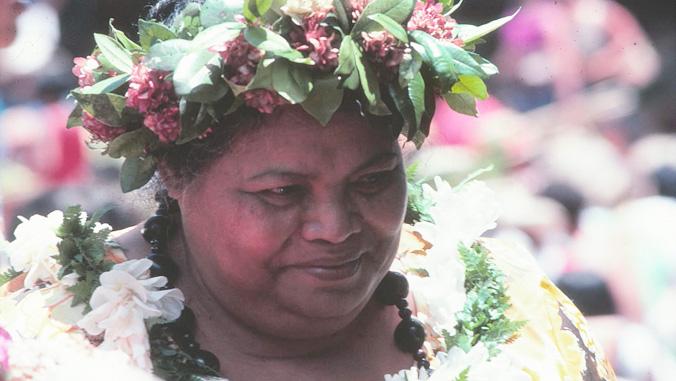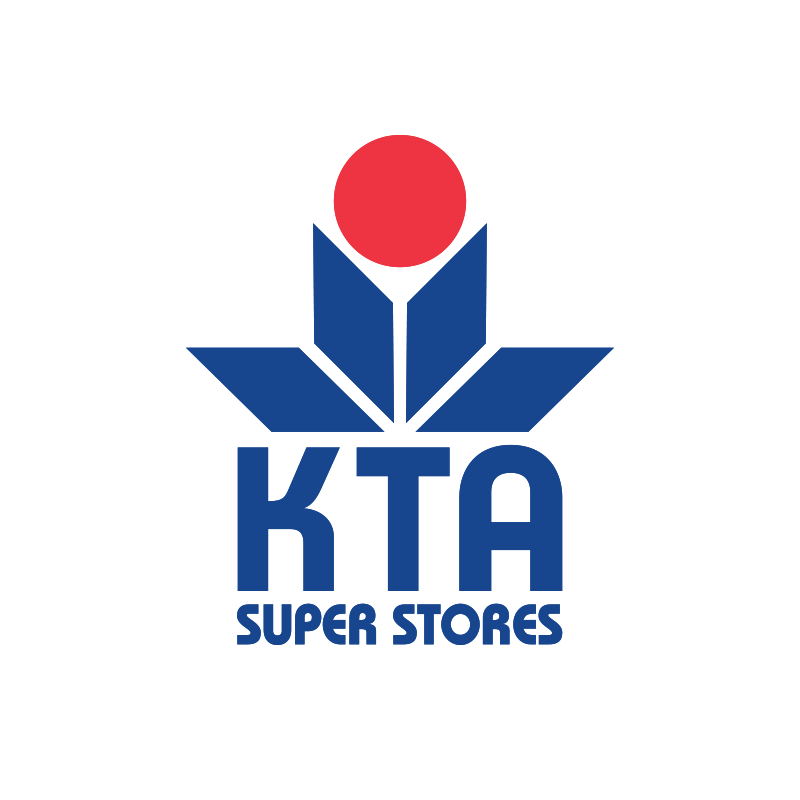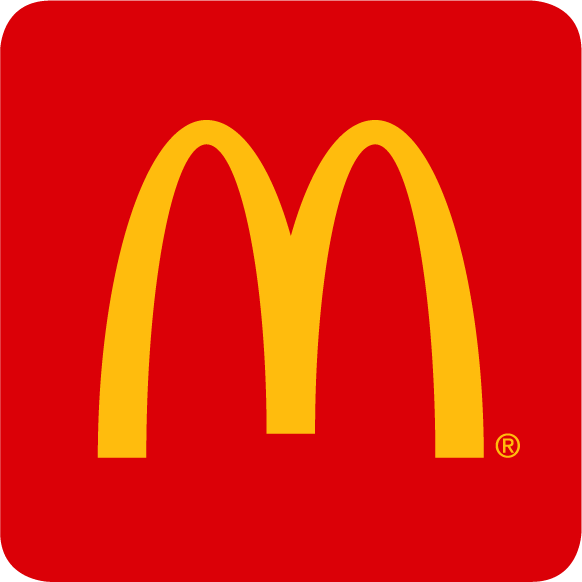What you need to know about the 61st annual Merrie Monarch Festival
Get ready, world. The Merrie Monarch Festival returns to Hilo on the Big Island this week in celebration of everything hula and Hawaiian.
The 61st annual festival runs from Easter Sunday, March 31, through April 6 this year. Hula will be in the spotlight not just during the competition portion of the festival but also during the Hōʻike and at other venues around town throughout the week.
Here’s everything you need to know — and more — about this year’s festival.
Where is the festival?

The Merrie Monarch Festival is held in a couple of venues at the Ho‘olulu Complex in Hilo, a 56-acre park and recreation center managed by Hawai‘i County just off Mamo Street, east of Wailoa River State Recreation Area.
- The Merrie Monarch Arts and Crafts Fair takes place at the Afook-Chinen Civic Auditorium, located at 323 Manono St., and the adjacent Butler Buildings.
- The Merrie Monarch Hōʻike and hula competition are conducted at the Edith Kanaka‘ole Multi-Purpose Stadium, located at 350 Kalanikoa St.
- The Merrie Monarch Festival office is also located on the complex grounds, next to the stadium.
What is this year’s Merrie Monarch schedule?
The festival kicks off March 31 with the annual Hoʻolauleʻa. The celebration, which features performances by local hālau, begins at 9 a.m. at the Afook-Chinen Civic Auditorium.
Here is a schedule of events for the week.
Free midday entertainment
- Noon April 1-5 at the Grand Naniloa Hotel, located at 93 Banyan Drive.
- 1 p.m. April 1-5 at the Hilo Hawaiian Hotel, located at 71 Banyan Drive.
Merrie Monarch Hawaiian Arts and Crafts Fair
- 9 a.m. to 5 p.m. April 3-5.
- 9 a.m. to 4 p.m. April 6.
The arts and crafts fair showcases and supports Hawai’i artisans and creators, featuring more than 150 of the state’s best. Admission is free and official festival apparel, posters and programs will be available for purchase.
Hōʻike Night
- 6 p.m. April 3.
This is an exhibition of hula and folk dance from around the Pacific. The performances are free to the public; no tickets required.
Miss Aloha Hula
- 6 p.m. April 4.
Individual competition, with contestants performing hula kahiko, hula ʻauana and oli (chant).
Group Hula Kahiko
- 6 p.m. April 5.
Hālau hula perform ancient style dances.
Group Hula ʻAuana and awards
- 6 p.m. April 6.
Hālau hula perform modern style dances followed by an awards presentation for all group winners.
Merrie Monarch Royal Parade
- 10:30 a.m. April 6.
One of the festival’s most entertaining and fun events for the entire family, the parade begins and ends at Pauahi Street, marching down through downtown Hilo along Kilauea Avenue, Keawe Street, Waiānuenue Avenue and Kamehameha Avenue.
The following roads will be closed from 10 a.m. to 2 p.m. April 6 for the parade: Kamehameha Avenue between Waiānuenue Avenue and Suisan Bridge, Pauahi Street, Kīlauea Avenue between Pauahi and Ponahawai Street, Keawe Street and Waiānuenue.
Where can you watch the internationally acclaimed hula competition if you didn’t get tickets?
Hawai‘i News Now – KFVE, the festival’s official broadcaster, carries the events live on-air and online each night, as well as special coverage during newscasts and on streaming platforms and social media. Click here for more. You can also follow the festival on Facebook and Instagram or visit the official website for additional information.
Who are this year’s Miss Aloha Hula contestants and their kumu?

- Keʻala Kaleinanihoʻopulakaumakamauloa Cabison-Kahoʻonei, Kumu Hula Shelsea Lilia Ai.
- Līhau ʻĪmaikalani Ichinose, Nā Kumu Hula Karl Veto Baker and Michael Lanakila Casupang.
- Caly Ann Kamōʻīwahineokaimana Ragonton Domingo, Nā Kumu William Kahakuleilehua Haunu‘u “Sonny” Ching and Lōpaka Igarta-De Vera.
- Kamalupāwehi Eiko Abad, Kumu Hula Niuliʻi Heine.
- Nicole Mei Lan Kaleihiwaokealiʻiokaloa Takamine, Nā Kumu Vicky Hanakaʻulaniokamāmalu Holt Takamine and Jeff Kānekaiwilani Takamine.
- Heleolanimaināmakaohāʻena Hailee Jo Yokotake, Kumu Hula Leinā‘ala Pavao Jardin.
- Chianti Kamailekaluhea Motta, Nā Kumu Kasie Puahala Kaleohano and Brandi Nohelani Barrett.
- Nāhakuʻelua ʻĀpuakēhau Kekauoha, Nā Kumu Hula Kunewa Mook and Kau‘ionālani Kamana‘o,
- Lilia Asayo Mccabe Takahashi, Nā Kumu Hula Robert Ke‘ano Ka‘upu IV and Lono Padilla.
- Kaʻōnohikaumakaakeawe Kananiokeakua Holokai Lopes, Nā Kumu Hula Tracie and Keawe Lopes.
- Amedée Kauakohemālamalama Conley-Kapoi, Nā Kumu Hula Haunani and ‘Iliahi Paredes.
- Shayla Angeline Kamalei Ballesteros, Kumu Hula Nāpua Silva.
- Kayla Sachi Celades, Kumu Hula Ka‘ilihiwa Vaughan-Darval.
Who are this year’s participating hālau hula and their kumu?
- Hālau Lilia Makanoe, Kumu Hula Shelsea Lilia Ai.
- Hālau I Ka Wēkiu, Nā Kumu Hula Karl Veto Baker and Michael Casupang.
- Hālau Nā Mamo O Pu‘uanahulu, Nā Kumu Hula William Kahakuleilehua Haunu‘u “Sonny” Ching and Lōpaka Igarta-De Vera.
- Hālau Ka Liko Pua O Kalaniākea, Kumu Hula Kapua Dalire-Moe.
- Hālau Mōhala ʻIlima, Kumu Hula Mapuana de Silva.
- Hālau Keolakapuokalani, Kumu Hula Drake Keolakapu Dudoit Delaforcé.
- Nā Pualei O Likolehua, Kumu Hula Niuliʻi Heine.
- Pua Aliʻi ʻIlima, Nā Kumu Hula Vicky Hanakaʻulaniokamāmalu Holt Takamine and Jeff Kānekaiwilani Takamine.
- Academy of Hawaiian Arts, Kumu Hula Mark Kealiʻi Hoʻomalu.
- Hālau Hula Kauluokalā, Kumu Hula Uluwehi Guerrero.
- Hālau Ka Lei Mokihana o Leinā‘ala, Kumu Hula Leinā‘ala Pavao Jardin.
- Hālau Ka Lehua Pua Kamaehu, Nā Kumu Hula Kasie Puahala Kaleohano and Brandi Nohelani Barrett.
- Hula Hālau ‘O Kamuela, Nā Kumu Hula Kunewa Mook and Kau‘ionālani Kamana‘o.
- Hālau Hi‘iakaināmakalehua, Nā Kumu Hula Robert Ke‘ano Ka‘upu IV and Lono Padilla.
- Hālau o ka Hanu Lehua, Kumu Hula Carlson Kamaka Kukona III.
- Ka Lā ‘Ōnohi Mai O Ha‘eha‘e, Nā Kumu Hula Tracie and Keawe Lopes.
- Hālau Kekuaokalā‘au‘ala‘iliahi, Nā Kumu Hula Haunani and ‘Iliahi Paredes.
- Ke Kai O Kahiki, Kumu Hula La‘akea Perry.
- Kawai‘ulaokalā, Kumu Hula Keli‘iho‘omalu Puchalski.
- Hālau Nā Lei Kaumaka O Uka, Kumu Hula Nāpua Silva.
- Hālau Hula O Kauhionāmauna, Kumu Hula Theresa Kauhionāmauna Ramento Tehiva.
- Hālau Hula Ka Lehua Tuahine, Kumu Hula Ka‘ilihiwa Vaughan-Darval.
Who are this year’s judges?
The judges are: Maelia Carter, Ed Collier, Ainsley Halemanu, Leimomi Ho, Nālani Kanakaʻole, Nani Lim Yap and Kealiʻi Reichel.
What is hula kahiko?
This is the traditional form of hula. It is accompanied by oli, or chant, and does not use modern instruments such as the ‘ukulele or guitar. Instead, traditional percussion instruments such as rhythm sticks, gourds carved into drums and rattles and bamboo sticks are used. According to The House of Kamakahelei, kahiko was generally performed before 1894.
What is hula ‘auana?
This style of hula is more modern and less formal than hula kahiko. “‘Auana” means to wander or drift, and this style has drifted away from the traditional hula kahiko. It is more interactive with the audience, taking influence from Western culture, and typically accompanied by song and a variety of instruments such as the guitar, steel guitar, bass and ‘ukulele. Hula ‘auana is more commonly used in movies and other Western media than its traditional counterpart.
Where can you get official Merrie Monarch wear?

Official Merrie Monarch wear will be available for purchase during the Merrie Monarch Hawaiian Arts and Crafts Fair. You can also find official merchandise at Prince Kuhio Plaza’s Merrie Monarch Craft Fair and during the festival’s opening Hoʻolauleʻa.
Merchandise can be purchased on the official festival website as well.
Official apparel is also available at the festival office at 865 Pi‘ilani St. in Hilo during regular business hours from 8:30 a.m. to 2 p.m. Monday through Friday.
What are the “instruments of hula”?

There are several musical instruments commonly seen and used on the Merrie Monarch stage, including:
- Pahu, a traditional tall and narrow Hawaiian drum carved from wood that is used to provide rhythm.
- Ipu, a percussion instrument made from a single gourd or two large gourds of unequal sizes joined together, called an ipu heke, which is hit with a hand or tapped on the ground to create a beat.
- ‘Uli ‘uli, which are gourds filled with pebbles, shells or seeds that rattle and are adorned with feathers.
- ‘Ili ‘ili, which are smooth stones that can be struck together like castanets for a more staccato rhythm.
- Pu‘ili are dried strips of bamboo that make a distinctive rattling sound when hit. They are used in pairs, with dancers tapping them against each other.
Why are the movements in hula so important?

No matter the style, hula shares the stories that connect people, including the dancers, to the foundation of Hawaiian knowledge and culture. It is a vehicle for historical and social commentary and passing down stories and information.
“Every movement, expression and gesture in the hula has a specific meaning, from representing plants, animals and the elements to listening, searching, sailing and so much more,” according to Honolulu tour company Go Tours Hawai‘i, which adds that hand movements are of particular significance.
Hand movements are used to represent the words in a song or chant. They can represent an emotion like yearning or signify nature, such as a tree swaying in the wind or an ocean wave.
What are common hula adornments?
- Pāʻū is a dance skirt worn by both men and women hula dancers. Made of kapa, or bark cloth, and elaborately decorated with stamped or painted patterns in ancient times, nowadays most dancers make them from woven cloth and dye, paint or silkscreen patterns onto them. They can be made with ti leaves; ‘ilihau, the processed bark of the hau tree; lauhala, the dried leaves of the hala tree; and even cellophane.
- Malo is a men’s loincloth. While malo have become popular again, for modern hula, men also wear trousers, sometimes with a ti leaf, lauhala or ‘ilihau skirt over them. They can choose to wear shirts, but it is not obligatory.
- Lei, the familiar garland of flowers, leaves, shells, ivory or feathers, are worn by men and woman around the neck or head and sometimes a hat.
- Kupe‘e are similar to lei but instead decorate wrists or ankles, drawing attention to the delicate movements of hands and feet.
Who was King Kalākaua and why is the Merrie Monarch Festival dedicated to his memory?
King David La‘amea Kalākaua, known as the “Merrie Monarch” for his flamboyant and fun-loving ways, was born Nov. 16, 1836, and died Jan. 20, 1891. The last king of the Kingdom of Hawai’i, he was elected to the post in 1874 and served until his death. Kalākaua’s sister, Lili‘uokalani, ascended to the throne, becoming the first woman to ever occupy it and the last Hawaiian sovereign to govern the islands.
Kalākaua did not support Christian missionary teachings that for decades had suppressed Hawaiian beliefs and traditions. Instead, he sought a renewal of all things Hawaiian, such as arts, medicine and hula. He and his queen, Kapi‘olani, lived by the motto, “Ho‘oūlu Lāhui,” or “Increase the Nation.”
Ancient Hawaiians had no written language. They used traditions such as chant and hula to record genealogy, mythology, history and religion, among others. Kalākaua not only relied on these traditional forms of documentation, he supported their practice and the expression of Hawaiian knowledge, ensuring future generations would inherit a robust Hawaiian heritage.
Kalākaua famously said: “Hula is the language of the heart and therefore the heartbeat of the Hawaiian people.”
The Merrie Monarch Festival maintains the teachings of kūpuna, or elders, and strives to perpetuate the history and culture of Hawaiian people in a manner that respects those teachings. The festival continues Kalākaua’s work, making sure the unique traditions of Hawaiian people flourish.
Who was Edith Kanaka‘ole?
Born Oct. 30, 1913, in Honomū on the windward side of the Big Island, Aunty Edith was a Hawaiian cultural icon, kumu hula, composer and chanter. A key influence in the Hawaiian renaissance of the 1970s, she dedicated her life to educating others about Hawaiian language and culture. She learned hula from her mother, who was instructed by acclaimed dancer Akoni Mika.
Kanakaʻole believed oli formed the basis of Hawaiian values and history. She started composing oli in 1946 and choreographed hula to go with many of her chants. In the 1950s, she toured the mainland United States, western Canada and much of Asia with a hula group named after her daughter Nalani. She also founded her own hālau, Hālau O Kekuhi.
She helped develop the first Hawaiian language program for public school students at Keaukaha School in Hilo, and In the 1970s she created college courses and seminars about subjects including ethnobotany, Polynesian history, genealogy and Hawaiian chant and mythology.
Kanaka‘ole died Oct. 3, 1979, but her teachings, beliefs and practices are maintained by the Edith Kanakaʻole Foundation, a nonprofit established in 1990. The Merrie Monarch Festival’s stage is inside a facility that shares her name, the Edith Kanaka‘ole Multi-Purpose Stadium in Hilo, and she also is featured on a new U.S. quarter that recently went into circulation, the seventh coin in the American Women Quarters program.
What are some Hawaiian words you might hear during the Merrie Monarch Festival?
- Hālau hula: A school for learning hula.
- Haumāna: Student.
- Kāholo: Nimble, swift, quick; to move fast, progress rapidly. It also is a common hula step in modern dances.
- Kāne: Male, man.
- Kapu: Sacred, holy, consecrated, forbidden.
- Kuleana: Responsibility.
- Kumu hula: Hula teachers.
- ʻŌlelo Hawaiʻi: Hawaiian language.
- Wāhine: Woman, lady.
Are there other events throughout Hilo during the festival?
- Prince Kuhio Plaza, located at 111 East Puainako St., will host its annual Merrie Monarch Craft Fair from 10 a.m. to 6 p.m. April 4-6. The craft fair is back bigger than ever this year, with more than 60 vendors throughout the plaza. Foodie Fridays is also hosting an array of food trucks and vendors for all three days in the parking lot.
- The Grand Naniloa Hotel is hosting its Merrie Monarch 2024 Mākeke (market) from 9 a.m. to 3 p.m. April 3-6. You can shop skincare items, snacks, bags, Hawaiian fashion and more offered by more than 40 local vendors.
- The Hilo Hawaiian Hotel will host its annual Merrie Monarch Craft Fair. Contact the hotel at 808-935-9361 for additional information.
- The “Jewels of the Land and Sea” themed fashion show comes to life from 7 to 9 p.m. April 2. Set against the enchanting backdrop of a transformed Lili‘uokalani Gardens, located at 189 Lihiwai St., illuminated under the night sky, this spectacle promises to be a mesmerizing fusion of fashion, music, nature and artistry. An after-party concert and marketplace is also planned from 9:30 p.m. to 1:30 a.m. at Nani Mau Gardens in Hilo. For more information and to purchase tickets, click here.
- ‘Imiloa Astronomy Center, located at 600 ‘Imiloa Place, is excited to announce even more incredible enrichment programs April 2-5 during this year’s Merrie Monarch Festival. Enjoy numerous workshops, extraordinary hula and mele, plus enthralling films, presentations and panel discussions with special guests. Tickets are on sale now. For our full lineup and to buy tickets, click here.




















